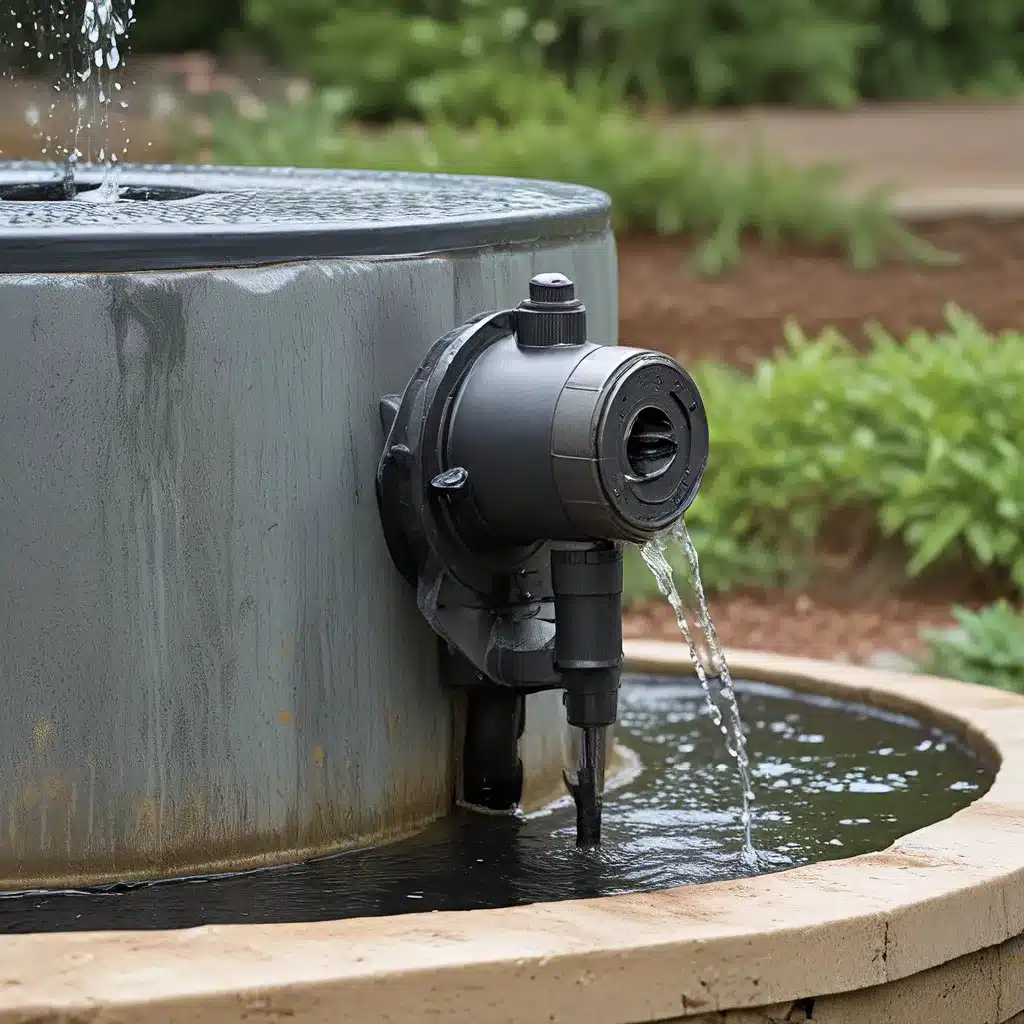
Fountain Design Essentials – Welcome to Fountain Lights
Menu
Fountain Design Essentials – Welcome to Fountain Lights

Ah, the joys of a beautifully lit fountain – the gentle splashing, the captivating interplay of water and light. But what happens when that mesmerizing display suddenly sputters and falters? Fear not, my fountain-loving friends! Today, I’m here to guide you through the sometimes murky waters of fountain pump and nozzle troubleshooting.
Before we dive into the nitty-gritty, let’s take a moment to ensure we’re equipped for success. As the wise folks at Kifco advise, it’s crucial to familiarize yourself with the Set Up and Preventative Maintenance Guidelines for your fountain. Dust off that user manual and give it a thorough read-through – it could be the key to unlocking the secrets of your fountain’s performance.
Now, I know what you’re thinking: “But I’m no fountain technician! How am I supposed to make sense of all this technical jargon?” Relax, my friends. I’ll be your guide, translating the technical mumbo-jumbo into plain English, step by step. Together, we’ll navigate this journey and get your fountain back to its former glory.
Let’s start with the heart of the operation: the fountain pump. This little powerhouse is responsible for circulating the water and keeping your fountain alive. But what happens when it decides to take a break?
First and foremost, check the power supply. Ensure that the pump is plugged in securely and that the circuit breaker hasn’t tripped. If everything looks good on the power front, it’s time to move on to the pump itself.
One common issue is a clogged or dirty pump filter. Over time, debris and gunk can build up, restricting the flow of water and causing the pump to work harder than it should. Grab a screwdriver and carefully remove the filter for a thorough cleaning. Don’t be afraid to give it a good scrub – a clean filter can work wonders for your pump’s performance.
If the filter is clean and the power is flowing, the next step is to inspect the pump impeller. This is the heart of the pump, responsible for drawing in water and pushing it through the system. If the impeller is damaged or worn, it can significantly impact the pump’s efficiency. Take a peek and make sure the impeller is in good shape.
And let’s not forget about the pump seals. These vital components help to keep water where it belongs – inside the pump, not leaking out. If the seals are worn or damaged, they can allow air to be drawn into the system, causing your fountain to sputter and underperform. A quick seal replacement might be just what the doctor ordered.
Now that we’ve covered the pump, let’s turn our attention to the fountain nozzles. These are the unsung heroes that transform the water flow into those mesmerizing patterns and displays.
One of the most common nozzle problems is clogging. Over time, mineral deposits, algae, and other gunk can build up, restricting the flow of water and distorting the fountain’s shape. Fear not, though – a little elbow grease and some gentle cleaning can often do the trick.
Start by removing the nozzle and giving it a thorough scrubbing. A soft-bristled brush and some mild detergent should help loosen any stubborn buildup. If the clogging is particularly stubborn, you might need to soak the nozzle in a vinegar or CLR (Calcium, Lime, and Rust) solution to dissolve the deposits.
But wait, there’s more! If the nozzle is in good shape and the water flow is still not up to par, the culprit could be a worn or damaged nozzle housing. These components can wear down over time, leading to leaks and uneven water distribution. A quick replacement of the nozzle housing can often do the trick.
Now that we’ve tackled the troubleshooting, let’s talk about the secret to keeping your fountain in tip-top shape: preventative maintenance. As the wise folks at Kifco suggest, this is the “most effective tool to prevent future service calls.”
Start by checking your fountain’s user manual and following the recommended maintenance schedule. This might include regularly cleaning the pump filter, inspecting the seals, and keeping a close eye on the nozzles. A little TLC can go a long way in keeping your fountain running smoothly.
Don’t be afraid to get your hands dirty, either. Routine cleaning and inspections can help you identify and address issues before they become major headaches. And remember, safety first! Always unplug the fountain and ensure the power is turned off before diving in.
To tackle those pesky fountain problems, you’ll want to have a few essential tools in your arsenal:
With these tools at the ready, you’ll be well on your way to becoming a fountain troubleshooting pro.
Remember, my friends, the world of fountain maintenance is a vast and ever-evolving one. As you embark on your fountain troubleshooting journey, be prepared for the unexpected. New technologies, innovative designs, and cutting-edge research are constantly shaping the way we approach these marvels of water and light.
So, keep your eyes peeled for the latest developments, and don’t be afraid to explore further. Who knows, you might just stumble upon the next big breakthrough in fountain technology. And don’t forget to check out Fountain Lights for all your fountain lighting needs – they’re the experts when it comes to bringing those watery wonders to life.
Happy troubleshooting, my fellow fountain enthusiasts! May your fountains flow freely and your spirits be as buoyant as the water itself.
Share to :
Subscribe to our newsletter for the latest in fountain design, innovative lighting ideas, and exclusive tips straight to your inbox. Join the community shaping the future of water features.

Rapid delivery to your doorstep.

Excellence in every product.

Great value for your investment.

Assistance at any hour.
Fountain Lights — Illuminating creativity in every splash!
Copyright © 2023. All Right Reserved